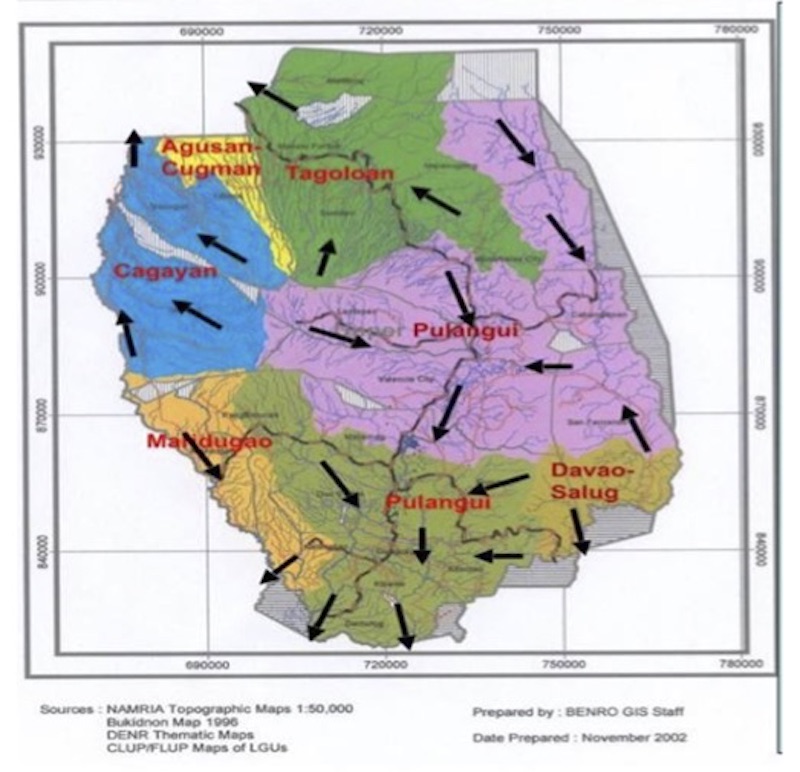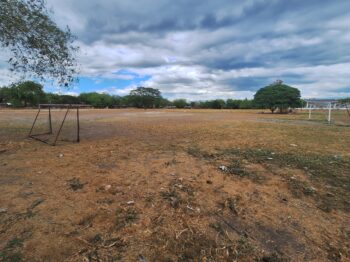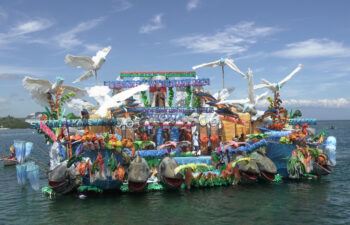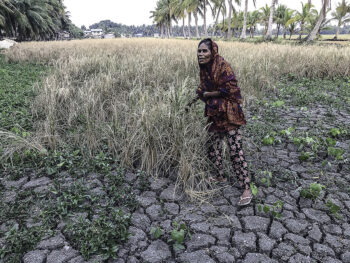MINDAVIEWS
INTEGRAL ECOLOGY: The Ecological Services of Bukidnon Rivers for Mindanao
By Fr. Reynaldo D. Raluto
1st of two parts | Read Part 2
CAGAYAN DE ORO CITY (MindaNews / 9 June) – To join the Department of Environment and Natural Resources (DENR) in celebrating June as Environment Month, this article highlights the importance of Bukidnon rivers to Mindanao sustainability. It has been claimed that the Island of Mindanao is named after “Maguindanaons,” which means “Land of Many Lakes.” Located at the heart of Mindanao is Bukidnon with its lakes and rivers. The name “Bukidnon” is derived from the Cebuano-Visayan word bukid, which means mountain. Indeed, Bukidnon is a landscape of mountains and plateaus, where about 70 percent of its land area has an altitude of 500 meters above sea level.[1]

Like many Mindanao provinces, the landlocked province of Bukidnon was originally populated by diverse tribal/indigenous peoples who largely depended on the products of land and the gifts of rivers. Many indigenous communities and tribal people in Mindanao named their tribes (e.g., Matigsalug) after the name of the rivers (e.g., Salug River) that support them.
Mindanao’s Six Major Rivers Originate from Bukidnon
The entire province of Bukidnon is ecologically significant as it also serves as the “headwater province” of Mindanao.[2] In fact, Bukidnon is the source of the six major Mindanao rivers that flow towards its low-lying neighboring provinces. These are the names of the rivers and their points of origin in Bukidnon,[3] as well as their draining destination to low-lying neighboring provinces in Mindanao region:
(1) the Pulangi River originates from Kalabugao mountains (Impasug-ong) and traverses 18 Bukidnon municipalities as it flows to the Cotabato provinces where it becomes the Rio Grande de Mindanao, the country’s second largest river;
(2) the Tagoloan River has its source in Malaybalay and flows toward Macajalar Bay in Tagoloan of Misamis Oriental province;
(3) the Cagayan River originates from Talakag and drains toward Macajalar Bay of Cagayan de Oro City;
(4) the Maridugao River has its source in Talakag and flows towards the edges between the boundary of Bukidnon and Lanao del Sur provinces;
(5) the Salug-Davao River emerges from San Fernando and drains towards Davao province; and
(6) the Agusan-Cugman River originates from Kitanglad mountain ranges (west of Lantapan) and flows towards Macajalar Bay of Cagayan de Oro City.
These major rivers continually collect the waters of at least 321 tributaries that originate and crisscross from the different corners of Bukidnon Province. Together with their tributaries, these major watershed arteries cover about 94 percent of Bukidnon’s total land area. These rivers will continue to deliver their ecological services as long as the required forest cover of the province is maintained.
The Ecological Value of the Kalabugao Watersheds
The vast Kalabugao mountains in the town of Impasug-ong, which extend beyond the political boundary between Impasug-ong (Bukidnon) and Claveria (Misamis Oriental) municipalities, serve as the point of origin of the country’s two largest rivers. They serve as the source of the Pulangi river, which becomes the Rio Grande de Mindanao in Cotabato, the second biggest river in the country. From these mountains, we can also find the respective sources of the Kalahaan and Uhot rivers that eventually merge to form the Agusan River, which is recognized as the country’s third largest river.
It should be noted that the Pulangi River catchments alone already cover about 65% of the entire Bukidnon province. Its principal tributaries are the Tigua, the Swaga, the Manupali, the Kulaman, the Maramag, and the Molita (sometimes spelled as Muleta) rivers. In the Cotabato area, where it becomes the Rio Grande de Mindanao that flows southwestward toward the Liguasan marsh, its principal tributaries are the Maridugao, the Kabakan, and the Allah rivers.
The Ecological Responsibility of Bukidnon People
Considering the interdependence and network of river catchments, the whole Province of Bukidnon may rightly be called as a watershed province not only for its own municipalities and cities but also for its neighboring provinces in Mindanao. From this perspective, the Bukidnon forest cover, which also serves as major watershed for the northern Mindanao region, is ecologically responsible for protecting its low-lying neighboring provinces from possible water crisis, floods, and droughts.
Significantly, two of the Bukidnon watersheds have direct interregional implications: the Pulangui River, which becomes the Rio Grande of Mindanao, drains its water down to Region 11 (Davao region) and the Bangsamoro Autonomous Region in Muslim Mindanao (BARMM); the Salug River from the Municipality of San Fernando serves as aquifer for Davao City. Needless to say, the residents of the low-lying provinces in Mindanao are stakeholders of the Bukidnon watersheds as they would either benefit from their healthy ecosystem services or be tragically affected by their hazardous ecological state.
[MindaViews is the opinion section of MindaNews. Reynaldo D. Raluto is a Roman Catholic priest of the Diocese of Malaybalay. He is the Academic Dean of St. John Vianney Theological Seminary in Cagayan de Oro where he also teaches fundamental/systematic theology and Catholic social teaching. He is the author of Poverty and Ecology at the Crossroads: An Ecological Theology of Liberation in the Philippine Context (Quezon City: Ateneo de Manila University Press, 2015). His ecological advocacy includes planting/growing Philippine native trees, mountain climbing, and defending the rights of Indigenous Peoples.]
[1] See Ronald Edgerton, “Frontiers Society on the Bukidnon Plateau: 1870-1941,” in Alfred McCoy and Ed de Jesus, eds., Philippine Social History: Global Trade and Local Transformations (Quezon City: Ateneo de Manila University Press, 1982), 361-89.
[2] See Antonio Sumbalan, “Conservation and Management of Watershed and Natural Resources: Issues in the Philippines, the Bukidnon Experience,” in Ian Coxhead and Gladys Buenavista, eds., Seeking Sustainability: Challenges of Agricultural Development and Environmental Management in a Philippine Watershed (Los Baños, Laguna: PCARRD, 2001), 218-231.
[3] See Province of Bukidnon, “Bukidnon Watershed Management Framework Plan” (unpublished document of the Bukidnon Watershed Protection and Development Council, Malaybalay City, 2003), 47.






